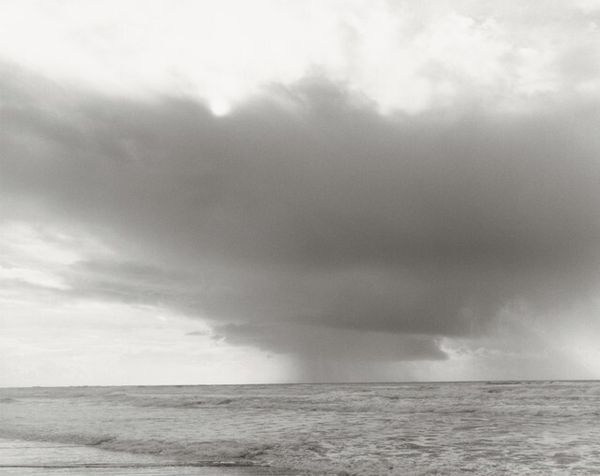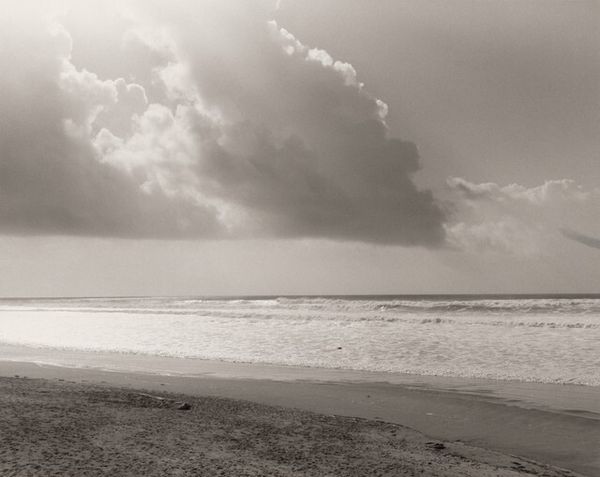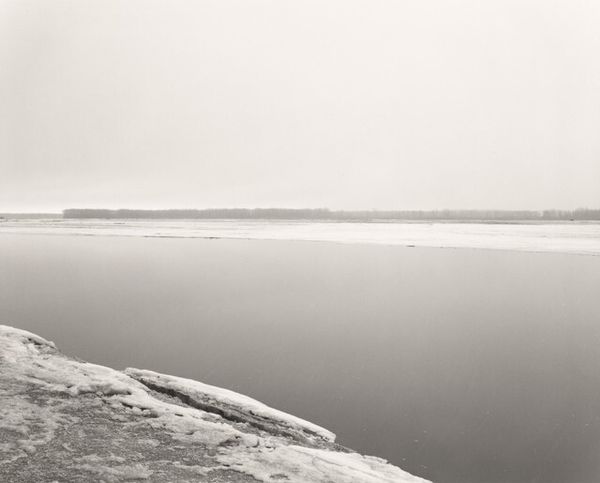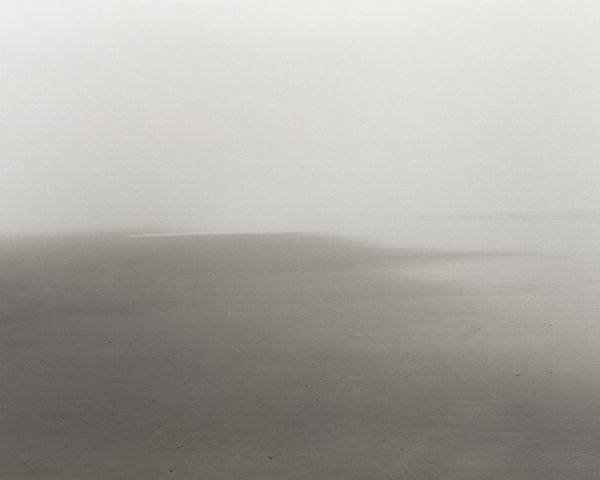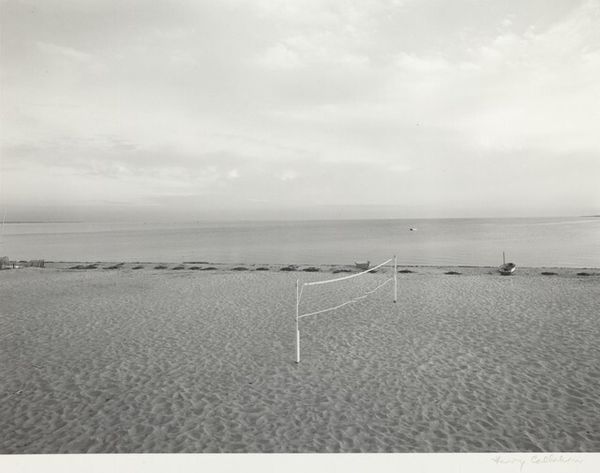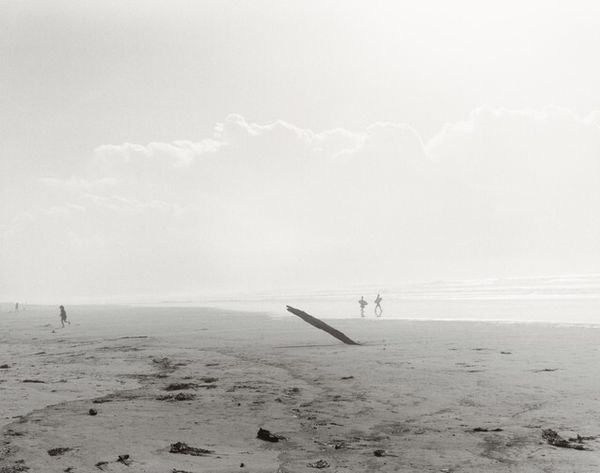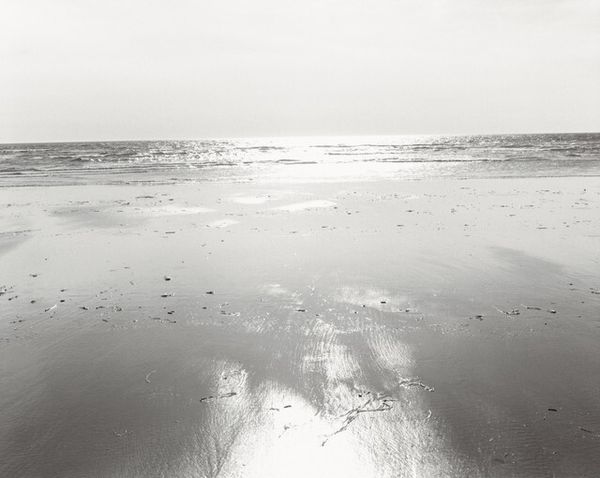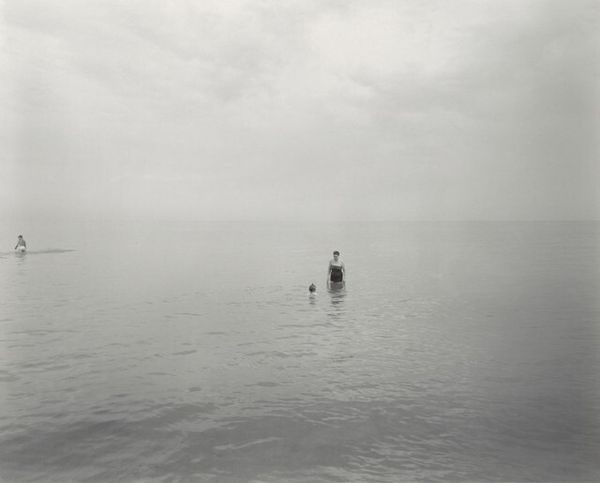
photography, gelatin-silver-print
#
black and white photography
#
landscape
#
monochrome colours
#
street-photography
#
photography
#
gelatin-silver-print
#
monochrome photography
#
monochrome
#
modernism
#
realism
#
monochrome
Dimensions: sheet: 20.3 × 25.3 cm (8 × 9 15/16 in.) image: 20 × 25 cm (7 7/8 × 9 13/16 in.)
Copyright: National Gallery of Art: CC0 1.0
Curator: Berenice Abbott's “Untitled,” taken in 1958, presents us with a stark landscape rendered in gelatin silver print. It's quite captivating, wouldn’t you agree? Editor: It’s bleakly beautiful. The monochromatic palette amplifies the immensity of the sky pressing down on the sliver of land and that relentlessly horizontal bridge... it’s ominous, almost apocalyptic in its serenity. Curator: Abbott, primarily known for documenting New York City’s architecture, turned her lens to natural landscapes later in her career. The image here captures an industrial subject, maybe a bridge. Do you believe this signifies a shift in her artistic focus? Editor: I think she continues her fascination with infrastructure. The focus changes but her lens captures not only form but a subtle narrative about humanity’s impact and intervention within spaces both rural and urban, land and sea. What is humanity doing to this landscape? Curator: Certainly. Her New York work showcased the rapidly modernizing city. This feels different though, almost a meditation on the relationship between infrastructure and natural space, in its impact on that natural space. The starkness of the landscape amplifies this question, right? Editor: Absolutely. Abbott's compositions often carry social commentary. This is not just about aesthetic; it's about positioning modernity's incursions within broader environmental discourses. Consider how the bridge might facilitate connection yet, visually, divides the land. There's an inherent contradiction to what seems 'progressive.' Curator: It highlights the double-edged sword of progress, exactly. Abbott started as Man Ray’s assistant. How did early movements, particularly realism and the Bauhaus movement that emphasized photography’s capacity, help sculpt Abbott's photographic language? Editor: Those early experiences clearly instilled a documentary impulse, grounding her artistic vision in recording lived realities while hinting at commentary, however subtle. Even with the formal influence, it's how these visual documents speak to contemporary conversations about ecology, identity, and power. How technology, form, and history all shape a viewer’s perspective. Curator: Looking at her work, I consider how art institutions frame our understandings. How do you feel Abbott’s artistic legacy interacts with modern movements and her own social commentary? Editor: Abbott presents such an opportunity for interdisciplinary discussions – from historical contexts and their impact, to environmental awareness. What remains, and resonates with me, is this gelatin print serves as a starting point of discussions on modernity’s implications for both environment and community. Curator: That is indeed the appeal. Abbott leaves us considering our connection to technology.
Comments
No comments
Be the first to comment and join the conversation on the ultimate creative platform.


